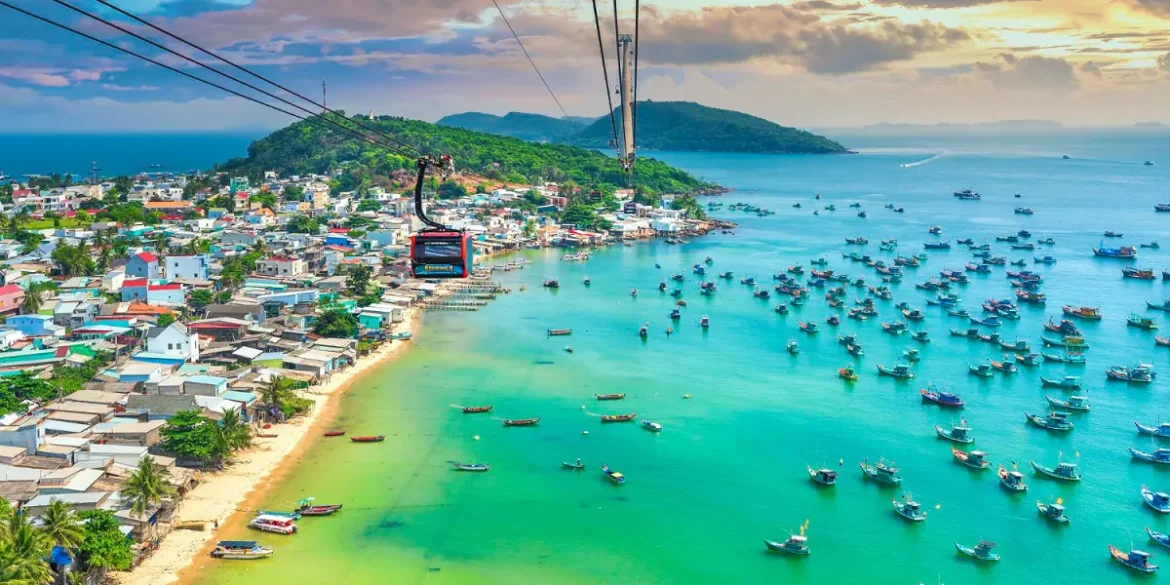Vietnam is a land of contrasts, where ancient traditions meet modern development, and where every region offers a unique cultural and natural experience. From the busy streets of Hanoi to the tranquil rice paddies of the Mekong Delta, a well-structured trip is the best way to appreciate the beauty of this Southeast Asian gem. A carefully planned Vietnam 2 weeks itinerary gives travelers a perfect blend of cultural immersion, scenic exploration, and relaxation without feeling rushed.
Why Choose a Two-Week Itinerary in Vietnam?
Vietnam stretches over 1,600 kilometers from north to south, offering diverse landscapes and climates. Two weeks allow enough time to cover the highlights while still leaving room for spontaneity. You can explore bustling cities, breathtaking natural wonders, and charming towns, giving you a well-rounded experience of the country. Whether you enjoy history, food, or adventure, this timeframe provides balance and variety.
Overview of the Journey
A typical two-week route through Vietnam follows a north-to-south pattern, though it can also be reversed. This journey includes:
- Days 1–3: Hanoi
- Days 4–5: Ha Long Bay
- Days 6–8: Hue and Hoi An
- Days 9–11: Da Nang and Surroundings
- Days 12–14: Ho Chi Minh City and Mekong Delta
This outline ensures travelers capture the essence of Vietnam’s cultural heritage and natural wonders.
Days 1–3: Hanoi, The Historic Capital
Your journey begins in Hanoi, Vietnam’s capital and cultural hub. The city is alive with buzzing scooters, ancient pagodas, and a vibrant street food scene.
Highlights include:
- Hoan Kiem Lake and Ngoc Son Temple for peaceful walks.
- Old Quarter, with its maze-like streets and traditional craft shops.
- Temple of Literature, Vietnam’s first university.
Food lovers will enjoy sampling pho, bun cha, and egg coffee from local vendors. Evening strolls around the lake and night markets are perfect ways to soak up Hanoi’s charm.
Days 4–5: Ha Long Bay Adventure
From Hanoi, head to Ha Long Bay, a UNESCO World Heritage Site famous for emerald waters dotted with towering limestone cliffs. The best way to experience this natural wonder is by taking an overnight cruise.
Activities may include:
- Kayaking between karsts.
- Exploring limestone caves.
- Watching sunrise and sunset from the deck.
Ha Long Bay offers a serene contrast to the busy capital and is a highlight of any Vietnam journey.
Days 6–8: Hue and Hoi An
Travel south to Hue, the former imperial capital. Here you’ll discover palaces, pagodas, and tombs that tell the story of Vietnam’s dynastic past. The Imperial Citadel is a must-visit, with its moats, walls, and ornate gates.
From Hue, travel through the scenic Hai Van Pass to Hoi An. This ancient town is famous for its well-preserved architecture, lantern-lit streets, and riverside charm.
Hoi An highlights include:
- Wandering through the Ancient Town.
- Visiting the Japanese Covered Bridge.
- Enjoying cooking classes or cycling tours in the countryside.
Hoi An is also an excellent place to have clothes tailored quickly and affordably.
Days 9–11: Da Nang and Surrounding Areas
A short drive from Hoi An, Da Nang offers sandy beaches and modern city life. Popular attractions include:
- Marble Mountains, a cluster of limestone hills with caves and pagodas.
- Dragon Bridge, which breathes fire on weekends.
- Ba Na Hills, home to the famous Golden Bridge held by giant hands.
For those seeking relaxation, My Khe Beach provides the perfect setting for a laid-back day by the sea.
Days 12–14: Ho Chi Minh City and the Mekong Delta
Conclude your trip in Ho Chi Minh City, the country’s dynamic southern hub. The city blends French colonial architecture with towering skyscrapers.
Key attractions:
- War Remnants Museum, offering insights into Vietnam’s modern history.
- Notre Dame Cathedral and Central Post Office, showcasing French influence.
- Ben Thanh Market, ideal for shopping and tasting local food.
A day trip to the Mekong Delta completes your two-week adventure. Cruise along canals, visit floating markets, and witness rural life shaped by the river.
Travel Tips for a Smooth Experience
To maximize your two weeks in Vietnam, keep these tips in mind:
- Transport: Domestic flights save time, while trains and buses provide scenic routes.
- Weather: Vietnam’s climate varies by region; pack layers and rain gear.
- Currency: Carry cash in Vietnamese Dong, as many local places don’t accept cards.
- Food: Street food is safe if you choose busy stalls with freshly cooked meals.
- Etiquette: Be respectful when visiting temples—modest clothing is recommended.
Optional Add-Ons for Extra Time
If your schedule allows, consider adding these destinations:
- Sapa: Trek through rice terraces and interact with ethnic minority groups.
- Phong Nha-Ke Bang National Park: Explore impressive caves and underground rivers.
- Phu Quoc Island: Relax on pristine beaches before heading home.
Conclusion
A Vietnam 2 weeks itinerary offers travelers the chance to experience the country’s full spectrum—from historical cities and scenic bays to cultural heartlands and vibrant markets. Each stop brings a new perspective, creating a journey filled with memorable contrasts. With thoughtful planning, two weeks in Vietnam can feel like a perfect balance of adventure, discovery, and relaxation.
